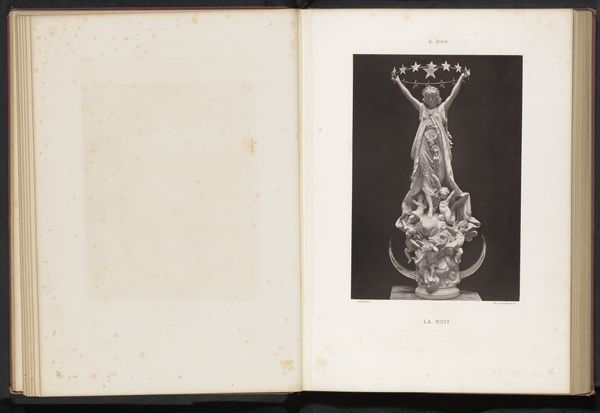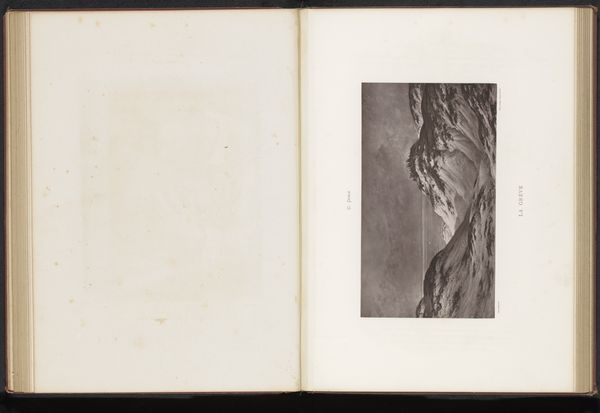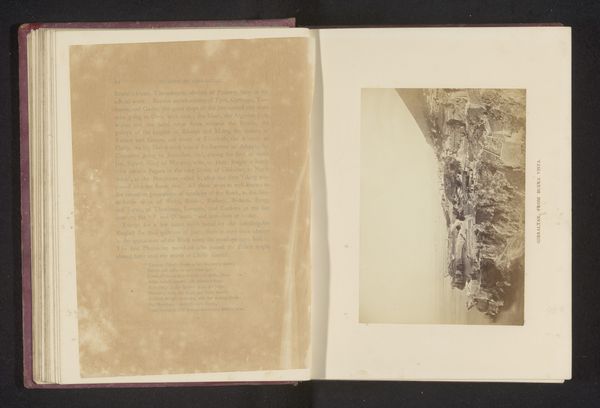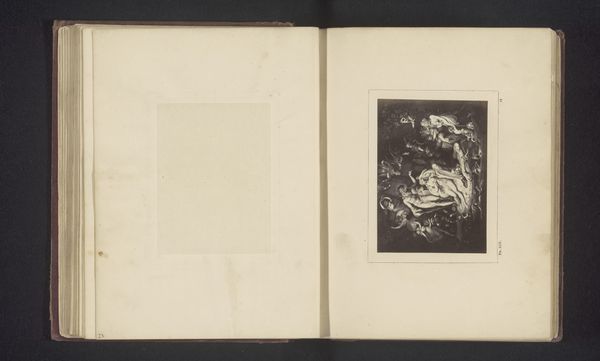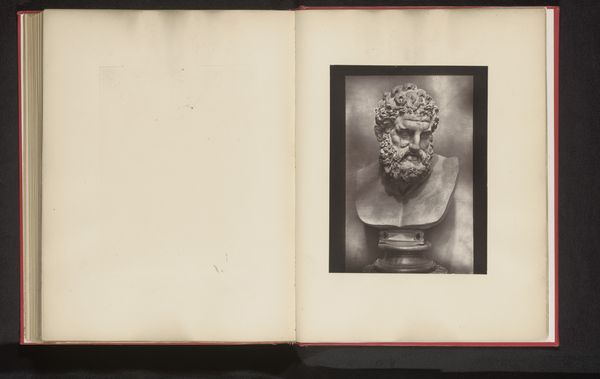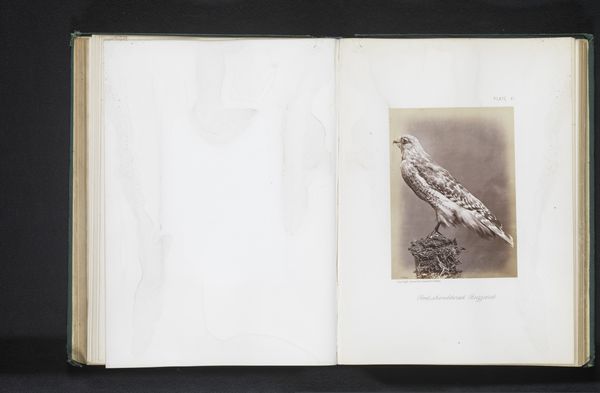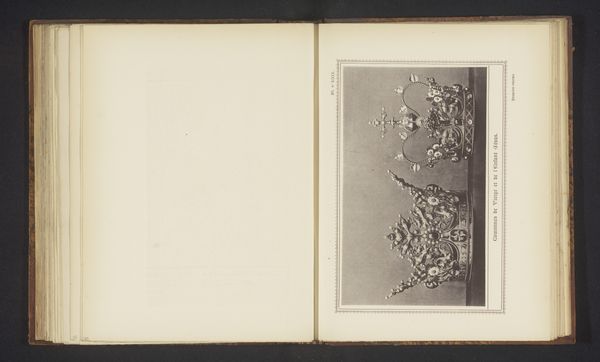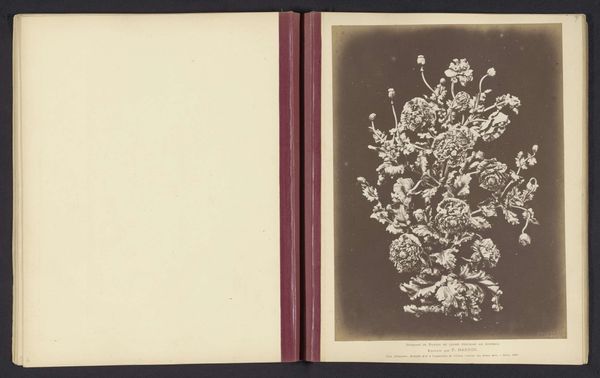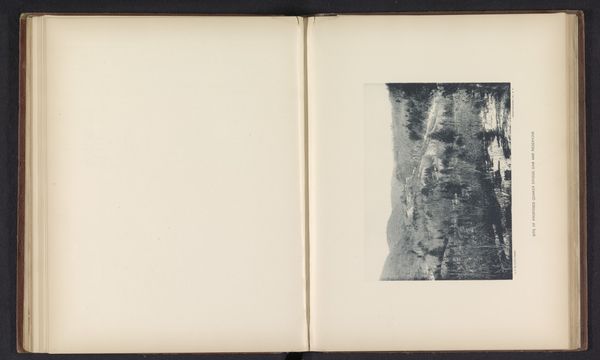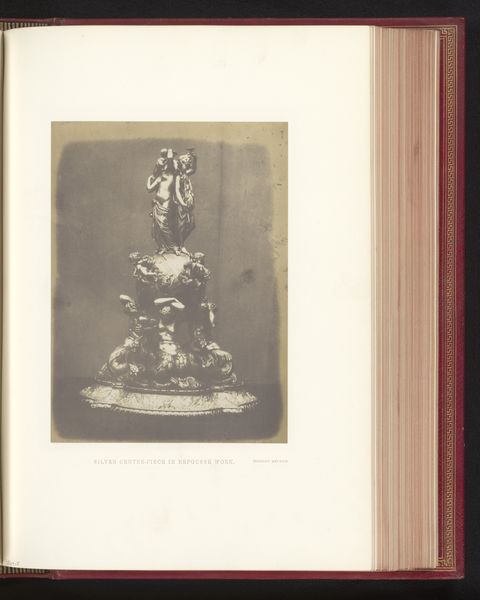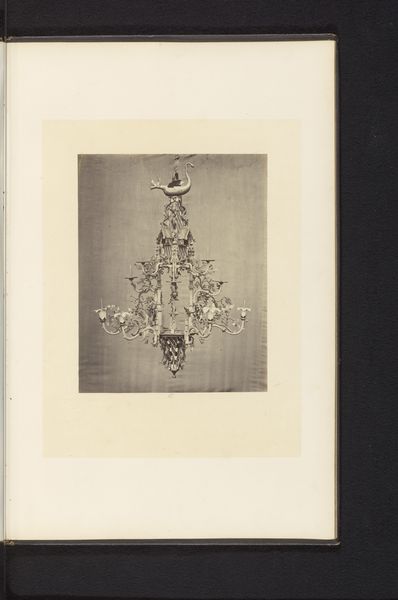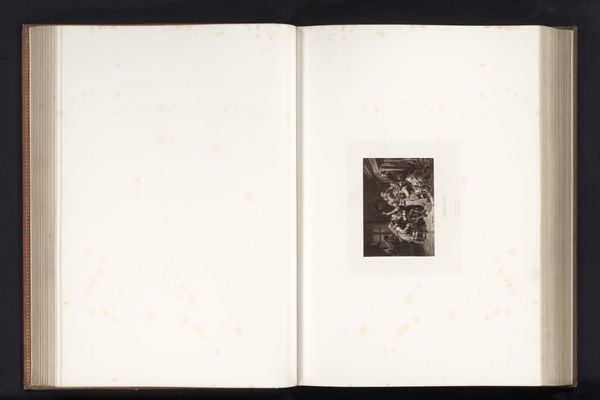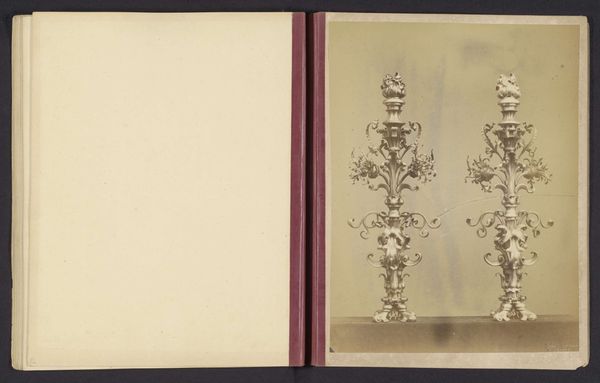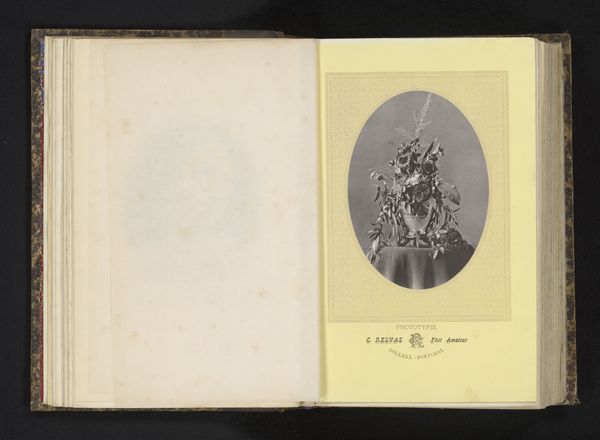
photography, sculpture
#
photography
#
sculpture
Dimensions: height 277 mm, width 172 mm
Copyright: Rijks Museum: Open Domain
Curator: I’d like to draw your attention to a photographic reproduction of Gustave Doré's sculpture, "La Vigne," dating approximately from 1874 to 1879. Editor: My first impression is overwhelming richness! It is densely decorated and ornamented, creating a kind of controlled chaos of texture. The lighting enhances the contrasts and complexities, particularly given that we are dealing with monochromatic photography rather than the original object. Curator: Indeed. Notice how the photographer, Charles Michelez, captures the interplay of light and shadow. The structure is articulated by this contrast. This is what gives it dimension in the photograph, emphasizing the sculpture's voluptuous form. Editor: Doré certainly leans into his symbols. It's hard to miss how figures intertwine with vines, embodying a connection between human form and nature's bounty, suggesting classical themes of Bacchanalia and harvest. It almost seems overloaded with signification! Curator: That saturation lends it potency, I believe. Semiotically speaking, these repeated visual cues cultivate a sense of abundance. And technically, that sculptural form and photographic method unite. It yields this wonderful surface pattern and rhythmic movement. Editor: From an iconographic perspective, "La Vigne" evokes themes of celebration and indulgence associated with wine culture. The vessel itself acts as an amplifier of cultural tradition. Curator: It has presence. And you really see that in the compositional decisions apparent in this picture. The dark background allows the detail of the ornate surface to really define the sculptural object. Editor: Examining this reproduction has certainly heightened my appreciation for both Doré’s artistic ambition and Michelez’s ability to capture it through photography. The image really resonates with its intricate detail. Curator: Absolutely. It’s fascinating how photography documents sculpture and alters the object’s artistic properties—light, form, and perspective change the overall impression.
Comments
No comments
Be the first to comment and join the conversation on the ultimate creative platform.
